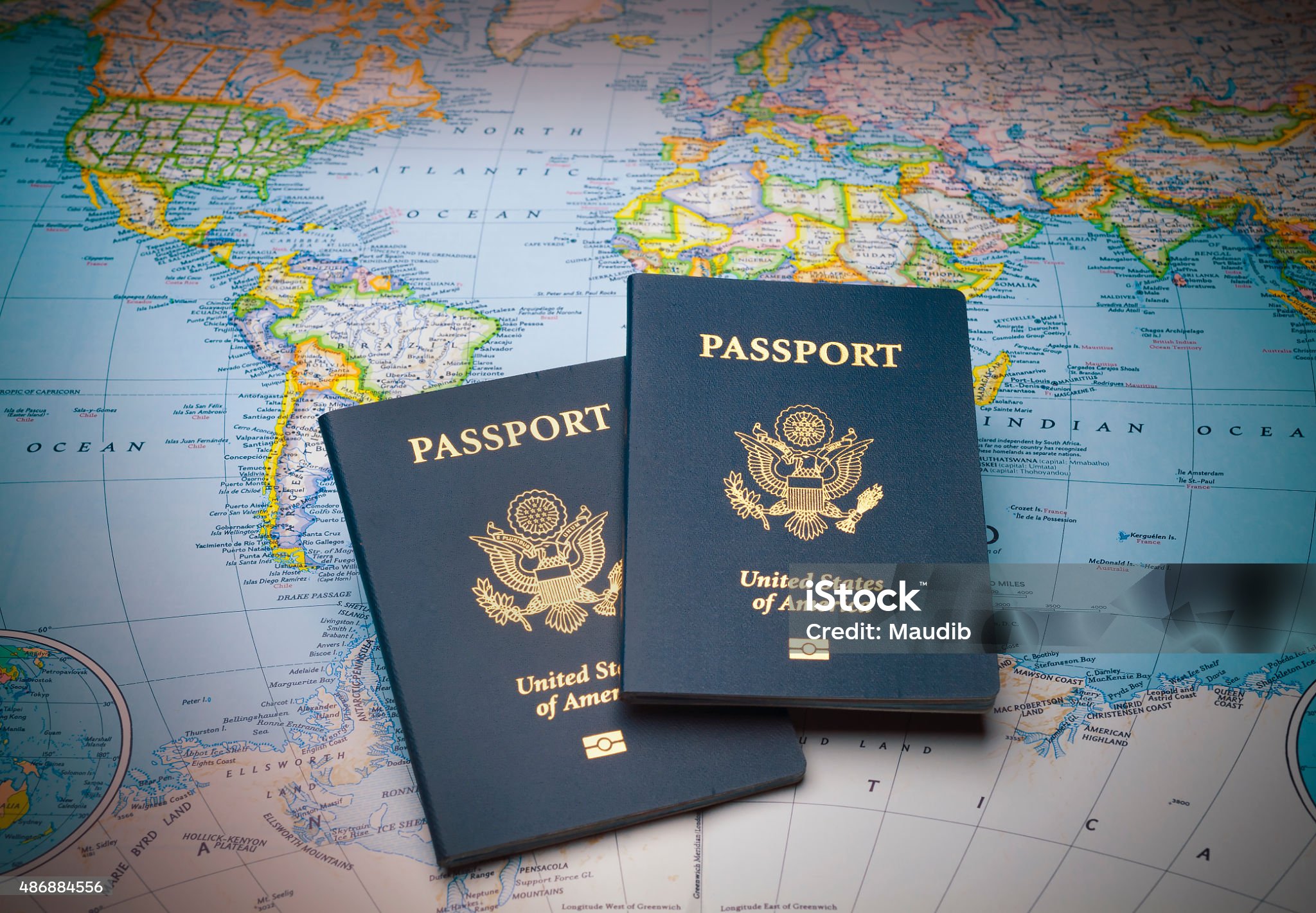Comprehensive Overview of Governing Laws for Identification Documents and Anti-Fraud Measures
Comprehensive Overview of Governing Laws for Identification Documents and Anti-Fraud Measures
Blog Article

1. Overview of Identification Documents
Personal identification documents are crucial for both individuals and society. They act as "permissions" and "access passes," allowing society to operate seamlessly when they are widely accessible and recognized. Various types of identification documents exist, each representing a distinct aspect or purpose. Take, for instance, a copyright, which authorizes one to operate a vehicle, and a copyright, which demonstrates citizenship and enables global travel. These documents are highly valuable on a personal level and are key to completing various contracts, for example, when applying for a job, accessing services, purchasing insurance, or renting a vehicle. Often, financial institutions might require access to these forms of identification when dealing with borrowers who appear unreliable or have poor credit histories. These documents function as both identity verification and legal authorization to operate financially or otherwise.
Historically, identification documents did not hold as much importance in daily affairs as they do today. The importance of these documents has grown alongside changes in security measures and legal requirements. Advances in information technology have made it possible for organizations to develop secure systems that are far ahead of the cutting-edge ID technologies available to the general public. Many countries are moving toward biometric technology to standardize their identification systems. Some already use electronic exit technology.
A person's identification documents are "proof" that signifies the legal status of an individual. Globally recognized identification forms, such as passports, copyright, copyright, and driver's licenses, are considered valid at both national and international levels. People often keep these important identification papers safely secured so that they can retrieve them easily when necessary.
This discussion addresses the legitimacy and importance of certain documents such as IDP, Real ID, copyright, copyright, copyright, and resident permits to increase awareness of their relevance. Educational staff and the general public need to be informed about these documents, and this knowledge could help prevent their loss or aid in their recovery. This information is intended for both domestic and international readers to ensure they do not miss the most important documents they need for their own knowledge and ideals.
2. Legal Framework and Regulations Governing Identification Documents
Identification documents are governed by laws and regulations that vary from one jurisdiction to another. Documents are issued directly to individuals by an issuing authority and under specific guidelines and rules intended to keep the integrity and accuracy of the document. In some cases, identification documents are compulsory, while in other cases they serve as forms of verification or validation. It is the responsibility of the individual to comply with the legal guidelines set by the jurisdiction where the document is to be used. In summary, it is important for individuals to be aware of the specific legal guidelines relevant to them in any jurisdiction where they plan to engage in transactions or utilize these documents. For the most part, state or local government agencies are responsible for issuing, regulating, and limiting specific documents for designated transactions.
However, the differences in identification requirements across jurisdictions may interfere with international travel and commerce. It is, therefore, a global concern when people feel wholly alienated when they travel from one country to another and do not comprehend the rules and regulations regarding identification documents. It would be impossible to detail every country’s specific identification rules here, but it is important to know, today and in the future, with nearly 200 countries bordering this globe and some 7 billion inhabitants who are traveling, trading, and doing business with each other. Failure to follow these rules may result in legal conflicts in foreign countries, where international reciprocity must then be considered. Noncompliance may result in civil or criminal consequences, breaching identity, privacy, trade, commerce, or human rights laws.
Public policies and protected rights can sometimes clash when creating security regulations for travel IDs. That is, human rights may conflict with public policy on the tightest, most secure identification and documentation required to combat terrorism. Finally, within the last five years, with the rise and acceptance of digital mobile driver's licenses, countries have been clarifying or drafting new laws and regulations to govern their use, which remains an evolving area. The next frontier for global travel may lie in the widespread use of digital identification documents. Even with the world moving toward mobile driver licenses, passports will likely remain necessary for some time to come. 
Both the standardization and evolution of digital IDs and mobile driver licenses are continuing to develop. For example, almost two years after California passed its law defining mobile copyright requirements, stakeholders are about to agree on formal regulations for the first state-sponsored mobile copyright.
3. Comparative Study of International Driver’s License, Real ID, copyright, copyright, copyright, and Resident Permit
An International Driver’s License serves as a form of identification for individuals driving in foreign countries. Neither the United Nations nor the International Non-Governmental Organization ever made the International Driver’s License to facilitate travel within a group of states.
The Real ID, as an identification, would primarily have a function such as being a widely acceptable identification to board domestic flights, alongside state driver’s licenses and identification cards produced by states and territories following a national standard. In addition to domestic travel, the Real ID can be used to enter federal sites and nuclear plants. However, the Real ID is not meant to replace a travel document, copyright, visa, or residency permit. Though some people might use the Real ID internationally for identification purposes and to confirm birth date, the Real ID is primarily used to travel domestically.
In the United States, passports serve as original forms of identification, as opposed to derived ones. A copyright is largely an instrument of foreign policy; it was created to safeguard citizens from arrest and assist them in traveling for diplomatic or non-obligatory negotiations. This is the copyright’s official and administrative purpose. Of course, the copyright has bureaucratic as well as personal applications. In order to travel abroad, especially across state borders, but in some states inter-regionally, the traveler must not only be fit to carry a copyright but also meet many other requirements.
copyright are issued at birth and are typically required to acquire passports and other forms of official ID. When comparing the two, it seems that both a copyright and a copyright serve the same fundamental purpose. That said, a copyright provides extended functions beyond its initial use. Also, even if used to obtain a copyright, a copyright cannot lead to obtaining a “second copyright”. It is irrelevant to the second copyright unless the traveler is planning to take on an illegal second nationality.
4. Security Features and Anti-Fraud Measures in Identification Documents
Various security features guard against counterfeiting, alteration, tampering, and fraudulent use. For example, many ID cards and documents include advanced features like holograms, layered images, and laser-etched designs. Other cards may contain an embedded RFID chip with a stored digital image and other biometric information.
Many security features are either hidden or semi-hidden, such as special inks, watermarks, or microtext. Such security features are put in place to make ID documents extremely hard to copyright or alter. 
Typically, the security level of an identification document is proportional to the level of trust it is expected to carry. For instance, a copyright doesn’t need the same high-level security features as a copyright, which is primarily used for international travel.
Advances in technology have driven the creation of more advanced security elements for ID documents. It is important to continuously implement and update security features and issuance methods to outpace counterfeiters and fraudsters.
Additionally, constantly assessing existing and new security features and issuance techniques is critical. This ensures that these features stay ahead of evolving threats that could undermine document security.
A robust anti-fraud security system must focus on both proactive and reactive approaches to prevent fraud. Proactive strategies involve measures such as training, public outreach, public service announcements, security conferences, and workshops.
5. Summary and Future Developments in Identification Document Technology
This document provides a global overview of various types of identification documents across different countries. It is important to see ID not only from the point of view of the technical level (multiple security features, function to verify, government and issuance bodies that could verify, etc.), but also from a legal standpoint, focusing on how these documents hold up in courts for verification.
Research indicates that opinions on the quality of identification documents and their verification worth differ depending on the context of use. Additionally, ethnography could illustrate how varying cultural perspectives influence the concept of an ideal identification document. Comparative work also offers understanding of the differences in document legitimacy, even among countries with comparable political, economic, and social frameworks.
Future trends in identification documents are rapidly evolving due to innovations in digital and technological fields. Technology is continuously boosting the CV and service offering of standard secure documents such as eIDs to follow the adoption of mobile phones. The main landmarks in this new convergence are biometrics and blockchain used as distributed ledgers.
Biometrics and its “liveness” function will collect the necessary biometric data during the direct correspondence between the person and the enrolling or verification authority, increasing the level of trust in the correct identity, excluding digital diversion of identity. It will copyright go beyond our basic human rights recognized by international law and several constitutions. This access should be kept as private as possible and subject to individual consent.
The spread of digital identity indeed can raise concerns about exclusion. Many people do not have the means to access digital identities, which can be problematic. A so-called “identity gap” is being discussed as a result of technology, which has created disparities in access to identity verification for different areas of life.
Digital identity systems should be more systematically compared with physical identification documents. Besides verifying identities, digital identity systems also play a role in evaluating risk for a range of transactions. Further research is needed to examine how the rights associated with offline identification verification can be extended to digital identity scenarios.